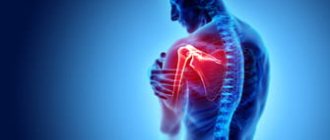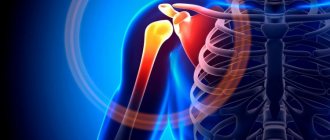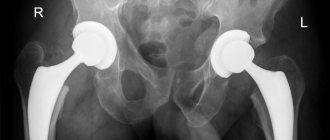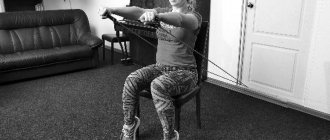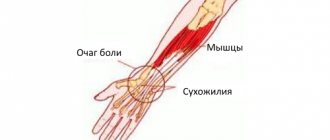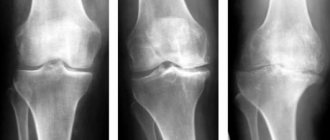Shoulders from a psychosomatic point of view
Shoulders and their condition are a reflection of the moral dilemma “would I want or should I?” Psychosomatics of the shoulders helps to identify a personality conflict: “I want or I need.” If problems arise with the shoulders (pain, stiffness, drooping and curvature), then this indicates that the person lives for others. He lives as society and his environment require, and not as he himself wants.
Straightened shoulders and straight posture, on the contrary, are an indicator of inner satisfaction and harmony. This means that a person lives in harmony with himself and follows his destiny. In psychosomatics, shoulders always reflect what a person is carrying. In a broad sense, their condition reflects the self-realization of the individual. And also the shoulders reflect the ability to create, express oneself, create. If a person betrays himself, then his shoulders become constrained.
What does the neck symbolize in psychosomatics?
The neck is an indicator of psychological flexibility and mobility. Neck pain indicates suppressed emotions: resentment, anger, fear, unwillingness to do anything. This “fetters” a person’s hands. First mentally, and then physically. Pain and spasms in the neck are an indicator of stagnation of vital energy.
Shoulder position and psycho-emotional state
The shoulders and arms help us transmit the energy of the heart. With their help, we hug, stroke, caress. If a person is not used to showing his emotions, opening his arms and accepting the love of other people, then his shoulders lose mobility over time.
Not only this is reflected in the position of the shoulders. Guilt and chronic fatigue are the second most popular reasons for drooping shoulders. If a person constantly slouches (subconsciously wants to be unnoticed, to appear smaller), bends under the weight of life’s problems, then over time his shoulders become deformed and become stooped.
There are other deformities of the shoulder girdle. What psychosomatics says, shoulders:
- Tense, high-raised shoulders are a sign of uncertainty, uncertainty, and confusion. A person often worries, does not find answers to tormenting questions (he spreads his arms and raises his shoulders up).
- The chest in a wheel and the shoulders laid back are attempts to close off from others, hide the soul and demonstrate the outer shell.
- One shoulder lower or higher, turned - a person prefers to avoid solving unpleasant situations, avoids the answer or really does not know it.
- Fixed shoulders are an indicator of emotional coldness, emptiness, and indifference. This suggests that a person suppresses desires or has completely forgotten how to desire.
- An involuntary twitch of the shoulder is a sign of internal doubts, a desire to “shake off” something.
In the case of emotions, everything is simple: remember what your shoulders and posture look like when we are happy, angry, sad, etc. The more often a person experiences some emotion, the more firmly the corresponding position of the shoulders is fixed.
Have you ever wondered why your shoulders hurt between the shoulder blades? This speaks of the fear of being bad, of not pleasing others. People with such pain are prone to self-criticism and often suffer from perfectionism and excellent student syndrome.
Settings that can help:
- I see around me and accumulate love and harmony with the world around me.
- There is joy and happiness in my life.
- My life experience every day is positive, joyful, pleasant.
- I perceive difficult situations without suffering, but with hope and the possibility of a quick and effective solution.
- I accept other people's responsibility for their lives.
- All my burdens in life are over my shoulder and a joy.
Suggest your version of a positive attitude in the comments.
If a person is able to adequately answer questions, the Cheat Sheet for working with psychosomatics will also help solve the problem with this illness on a spiritual level. She takes you step by step to the main cause of the disease and opens up the possibility of how to improve your health and interaction with the world around you.
In addition to this, a scientifically based method of transformational drawing can help: neuro-graphics. It allows you to relieve tension in an environmentally friendly way, level out blocking moments and create the desired state. It is built on the connection between the brain, central nervous system and hand motor skills.
Possible psychological causes of shoulder pain in men and women
Pain in the shoulders and muscles of the shoulder girdle indicates a feeling of depression. People with such problems, as a rule, ignore their desires and needs and live without harmony with themselves. At the same time, they are forced to carry a lot on their shoulders. The more a person endures and restrains himself, the stronger the tension and pain in the shoulders.
Which side does the pain come from?
When understanding the psychosomatics of pain, you need to take into account which side the pain originated from. Different parties are responsible for the release of male and female energy. According to another psychosomatic theory, the right shoulder is responsible for relationships with society and professional self-realization. And the left shoulder is for harmony in your personal life. Pain on the left indicates living with an unloved person and the fact that the patient does not want to close the distance with the interlocutor in the process of conflicts and discussions.
Injuries and chronic illnesses
Do you know that even injuries have psychosomatic background? For example, a broken shoulder indicates that a person has lived incorrectly for years, against his nature. He gave himself completely to other people and nipped personal desires in the bud.
Let's take a closer look at other injuries and illnesses:
- Scoliosis is the result of high expectations from others and the inability of the individual to meet them.
- Arthritis is an indicator of unresolved problems that prevent you from moving forward.
- Arthrosis is an indicator of sacrifice, the habit of doing your own and others’ work, helping others when you yourself need help.
- A dislocated shoulder is a reaction to a life-threatening situation, conflicts with others, or an individual’s inability to fulfill his promises.
- Stretch – fear of making decisions and unwanted consequences.
This is interesting! The more serious the injury, the more tired the person is, and the more internal contradictions have accumulated. Sick leave following an injury allows you to rest and relax. At this time, a person does not need to pull the entire burden of responsibilities. On the contrary, they listen to his desires and needs and look after him.
Muscle tension in the neck as a ban
Clamps on the neck are an internal protest against the fact that someone is “sitting” or “hanging” on the neck. The person is carrying too heavy a load. Moreover, the person himself feels the weight of obligations or circumstances, but he is convinced that he is unable to get rid of it (“this is my cross, I must bear it”). However, most often you can get rid of this, but the problem is far-fetched.
Right and left side of the neck
Every person, regardless of gender, has feminine and masculine energy. The left side of the neck is responsible for feminine energy. What does it mean:
- In women, pain on the left is caused by suppression of femininity, living with an unloved person, and sexual dissatisfaction.
- In men, pain on the left indicates problems in relationships with women, suppression on their part.
The right side is responsible for male energy. What do tense shoulders mean?
- For men, it is an indicator of aggressiveness and power, which is caused by an excess of responsibilities (takes on too much, but cannot cope).
- For women, it is an indicator of victim thinking (the woman is being taken advantage of by other people or she is in the hands of a tyrant).
It is important! Shoulder pain is a serious symptom. The longer you ignore him and live someone else's life, the worse the consequences will be. Remember: personal development is impossible in such conditions.
What is the conflict about?
The main conflict that leads to problems with arms and shoulders is the conflict of self-devaluation as a general conflict of relationships. And the consequence: arthritis, fracture, dislocation of the shoulder or arm. And these diseases appear in the conflict resolution phase. For example, the psychological stress associated with the fact that a person feels underappreciated at work, after an unpleasant conversation with the boss, is resolved with the help of the body: “accidentally” this person hits the door with his right shoulder. The conflict in the soul is resolved by our rescuer, the body. Psychic energy did not disappear anywhere, but descended to a dense level - the body. The content and object of the conflict will be indicated by the side of the body (right or left) where psychosomatics arose.
How to get rid of neck pain and eliminate the psychosomatic cause
To correct the condition, you need to cultivate healthy egoism and self-love. You need to remember your abilities and desires, find your purpose and follow it. It happens that a person is afraid to disappoint someone, not to live up to expectations. Then you additionally need to work with fear and anxiety.
Often, living for the sake of others is associated with dependent relationships. This is especially common in the parent-child system. In this case, it is necessary to “cut the psychological umbilical cord” and learn independence.
But at the same time, it is important to have support from loved ones and maintain trust in the relationship. To do this, you can try this exercise:
- Stand with your back to the loved one with whom you want to improve your relationship.
- Have him place his hand on your shoulder joint.
- Lean on your palm and maintain this position for three minutes.
It is important to do the exercise regularly and take it seriously. Then within two days the pain will subside. It is unacceptable for the second person to scare you, put you down abruptly, etc.
To correct your worldview, it is useful to analyze the problem situation:
- Write down everything that worries you on a piece of paper.
- Write down all the pros and cons of the current situation.
- Answer in writing the questions “What will happen if I do this?” and “What will happen if I don’t do this?” Evaluate and compare the possible consequences of activity and inaction.
Sometimes shoulders hurt because the desires of the individual do not coincide with the capabilities due to the inflated demands and expectations of the person himself. In this case, it is necessary to come down to earth and adjust the level of aspirations.
Getting rid of psychosomatic pain requires long work to correct self-awareness. You have to understand what emotions and living conditions interfere with personal happiness. And after that you have to decide how to deal with them. A complete rethinking and restructuring of life is necessary. You need to stop and think about what you are doing wrong, what energy you are suppressing. Maybe you should write music while you sit in the office on a 2/2 schedule, because it’s more stable there, or because your loved ones want it that way.
Psychosomatics of pain in the shoulders and neck
Shoulder pain or neck tension occurs during a difficult period in life and in a state of neurotic depression. This is an indicator that a person has too many problems. Or his entire life has been weighed down by too much.
By Louise Hay
Psychosomatist Louise Hay believes that shoulder pain indicates a feeling of helplessness and hopelessness. The condition of the shoulders is an indicator of how a person can endure life’s difficulties. No situation is a problem until we begin to perceive it as a problem. Only our negative attitude towards life turns events into a heavy burden. Louise Hay recommends using this af.
By Liz Burbo
According to Liz Burbo, pain in the shoulders indicates that a person takes on too much and worries too much about others, and tries to carry everything on his shoulders alone. He considers himself responsible for the well-being of other people, lives for their sake, forgetting about his own well-being. He works hard and works hard. But the shoulders hurt not from the very fact of work, but from coercion. A person does not like what he does, but he believes that he should do it. Pain when moving or trying to raise your arm is a sign of an inability to accept some situation or person.
It is important to understand that by putting someone else’s work on your shoulders, you harm both yourself and those people. You deprive them of their independence. And you force yourself to live without pleasure. You need to think about what provokes this behavior. Maybe you think that others will repay you in kind later. Or you feel obligated to someone.
You need to learn to love yourself, take care of yourself. You need to soberly assess your capabilities. You don't have to like other people. You don't owe them anything, just as they don't owe you anything.
According to Dr. V. Sinelnikov
In Dr. Sinelnikov’s theory, the neck symbolizes psychological flexibility. Pain in the neck and shoulders indicates narrow thinking, an unwillingness or inability to see what is nearby and behind the back. It is also an indicator of the inability to see different points of view, different sides of the problem and its solutions. The pain intensifies if, in addition to psychological rigidity, there is suppression of negative emotions.
According to V. Zhikarentsev
According to Zhikarentsev's theory, shoulder pain is an indicator that you are carrying a heavy burden. At the same time, you feel helpless and defenseless. For healing, use this af.
Traditional methods of treatment
For pain in the shoulder joint, therapeutic exercises :
- sit on a chair and place your hands behind your back. Firmly grab the wrist of the one that hurts with your healthy hand. Smoothly stretch it as far as possible to the side for 15 seconds. When you feel pain in the muscles of your arm, slowly return to the starting position of your arm.
- sit on a chair, keep your hands on your waist and slowly begin to rotate your shoulders: with one hand, then with the other, then with both at the same time. Return to the starting position. Push both shoulders forward all the way and hold this position for a couple of seconds. Then repeat the same movement backwards. Perform each movement 8 times.
- medicinal tincture: mix 4 tsp in one liter of alcohol. burdock root, 2 red peppers and 5 tbsp. lilac flowers. Leave it for 5 days and you can rub it on sore joints.
Preventing shoulder and neck pain
Shoulders are a reflection of the energy of action, freedom of action and self-realization. Based on their condition, one can judge a person’s satisfaction with life, work, and occupation. An unbearable burden of responsibilities, dependence on the opinions of others and an unloved activity provokes the development of psychosomatic problems in the shoulder girdle. Accordingly, the best prevention is to find a favorite activity and calling. Always ask yourself: “Do I need this?”, “Do I want this or does someone else want it?” Only complete well-being at work, in personal and family life will preserve the health of your shoulders.
Spiritual integrationism by Konstantin Dovlatov
A unique method developed by psychologist, coach, candidate of psychological sciences Konstantin Dovlatov allows you to quickly, in the shortest possible time, safely heal the conflicts that triggered the psychosomatics of the arms and shoulders. Having mastered this method, you will learn to see the causes of these conflicts, their participants, to know when these occurred episodes, and in a state of unconditional love and harmony, heal them. Moreover, in one session of Spiritual Integration it is possible to heal hundreds, or even thousands of causes of conflicts, even if they happened not only in your life, but also in the lives of your ancestors. As a result, a lot of energy will be released, which will be used to heal the body. After all, our savior - the body - will no longer need to hold the defense, support the disease, it will simply disappear! And there are a lot of such cases!
